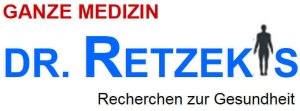Are there any scientific studies using brain stimulation in Polymyositis Rheumatica?
a patient with cancer develops polymyositis at the same time. We don’t necessarily want to give the “standard drug” prednisolone because of the cancer, so I looked for studies to see whether we could treat this disease using our “modern” brain stimulation (vagal stimulator or tDCS).
why can brain stimulation possibly improve rheumatic = inflammatory diseases?
I will soon be writing a new post here about the reduction of cytokines such as TNF-Alpha, IL-3/6/9 and INF-y through brain stimulation
This shows in studies positiv effects on the body: be it Arthrosis pain, Arthritis, Intestinal inflammation, irritable bowel syndrome, Liver inflammation,……
Petros shows us numerous FMS / Pain patients
I can’t even think of incorporating his many testimonials (which he sends almost daily via WhatsApp) here in my homepage.
Plus: we have similar cases but my “Austrian” patients all tell me: “Video no, I don’t want to appear in public”, the Greeks don’t care or are happy if they do can help with giving a testimonial about the treatment that finally helped them after often years of suffering!
so our question is: can brain stimulation also treat a rheumatic (autoimmune?) disease such as Polymyositis?
Studies for polymyositis and brain stimulation
I actually found a positive study that answered this question with a definite YES

Summary: Helps with pain, has no side effects
2020 study in dermatomyositis
Summary: helped and no side effects

Case report of dermatomyositis – long-term untreatable pain after shingles resolved in a very short time with brain stimulation
Summary: The patient was tormented for years by severe post-herpetic herpetic pain (shingles), which was massively improved in a very short time with brain stimulation, no side effects.
We have experienced several such difficult pain cases in our practice in the last 3 months!

Finally
The study situation in the pubmed is not big but serious enough and positive that we can assume that brain stimulation with no side effects could reduce pain in his Polymyositis, so that we can save on cortisone, which we don’t necessarily want to give him because of his cancer!


